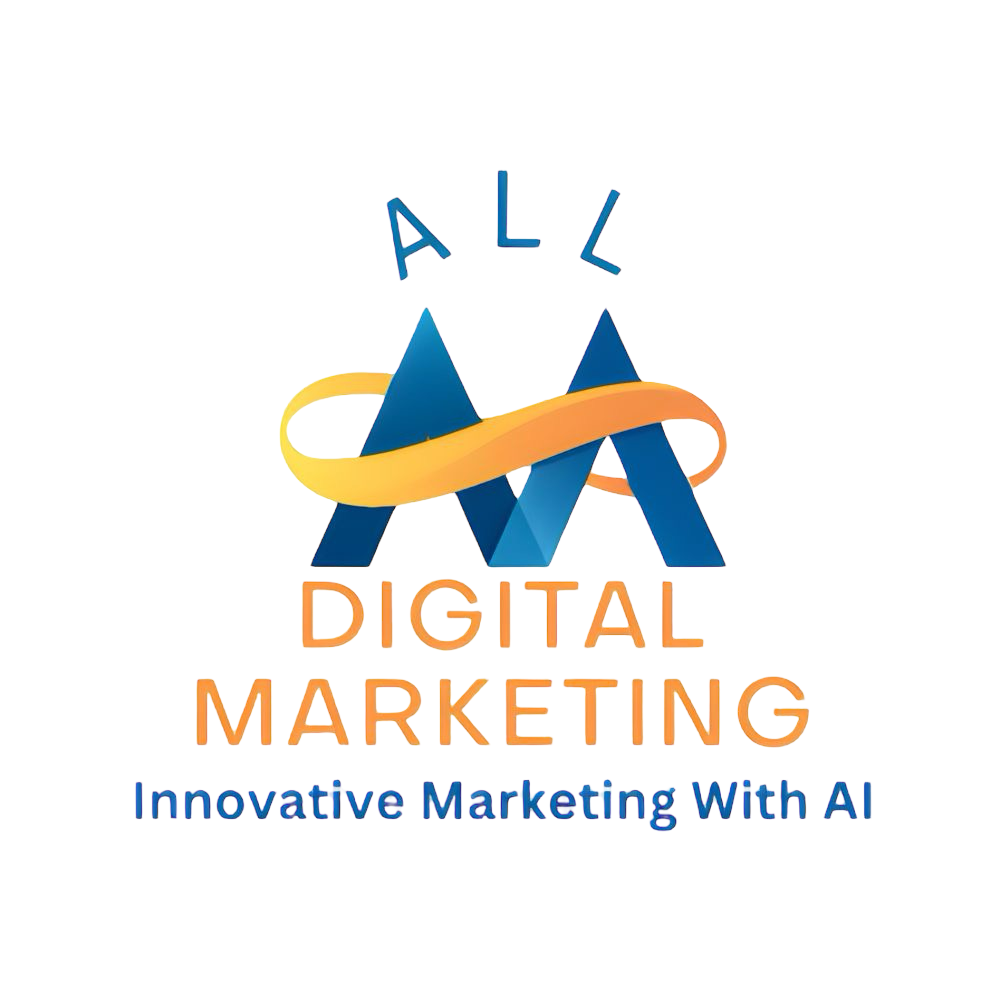The AI Revolution Is Here—But Are You Using It Right?
Imagine having a marketing superpower that could generate unlimited content, scale your production tenfold, and never sleep. That's the promise of AI in 2025—but here's the brutal truth: most businesses are doing it completely wrong. While your competitors churn out generic, AI-generated fluff that Google increasingly penalizes, forward-thinking companies are discovering the perfect balance between artificial intelligence and human expertise. The winners in this new landscape aren't replacing humans with robots—they're creating powerful partnerships between the two. Today, I'll show you exactly how Digital Marketing All is leading this revolution, and how you can too.
Key Takeaways
Human-AI collaboration is non-negotiable: AI tools should enhance human creativity, not replace it. Companies using AI without human oversight are seeing their content quality and search rankings plummet.
E-E-A-T principles drive success: Experience, Expertise, Authoritativeness, and Trustworthiness aren't just Google buzzwords—they're the foundation of content that converts in 2025.
Strategic process beats random tools: Our proven multi-step workflow combines tools like ChatGPT-4 and Claude with human expertise at critical points for maximum impact.
Transparency builds customer loyalty: Being open about your AI usage while emphasizing human elements creates trust in an increasingly skeptical marketplace.
Proprietary data is your secret weapon: Original research and exclusive insights make your content un-copyable by competitors relying solely on AI.
The Rise of AI in Content Marketing: A Three-Year Perspective
Remember late 2022 when ChatGPT burst onto the scene? Marketing teams everywhere had the same thought: "We can create unlimited content without hiring more writers!" Fast forward to today, and the landscape looks dramatically different.
Companies that went all-in on replacing humans with AI quickly learned a painful lesson. Their content became repetitive, lacked depth, and failed to connect with audiences. Worse yet, Google's algorithm updates began actively identifying and demoting pure AI content.
The statistics tell the story: according to Search Engine Land, sites relying heavily on unedited AI content saw traffic drops of up to 70% following recent algorithm updates. Some even received manual penalties, effectively disappearing from search results overnight.
At Digital Marketing All, we recognized early that the magic wasn't in AI alone—it was in the strategic partnership between human creativity and AI efficiency. Instead of asking "How can we replace writers?" we asked, "How can we make our creative team exponentially more powerful?"
The result? A framework that has helped our clients like Adobe and LinkedIn scale content production while maintaining the human touch that drives engagement and conversions.
How Digital Marketing All Uses AI: A Strategic and Ethical Approach
Remember when everyone thought calculators would make math skills obsolete? Instead, they freed us to focus on higher-level problem-solving. That's exactly how we approach AI at Digital Marketing All—as a tool that handles the tedious work so our human experts can focus on strategy and creativity.
Our approach integrates AI at specific points in the content creation process while maintaining human control throughout. Here's a breakdown of our favorite tools and how we use them:
ChatGPT-4: Perfect for initial brainstorming and outlining content structures
Claude: Excels at developing nuanced content sections with natural language
Gemini: Our go-to for tone refinement and style consistency checks
Murf.ai: Transforms written content into natural-sounding voiceovers
Scout: Our proprietary platform that identifies high-value topics and keywords
But having great tools is only half the battle. What truly matters is how you integrate them into a cohesive process. Here's how we structure our content creation workflow:
Step 1: Ideation and Research
We begin with Scout to analyze search intent and SERP trends, identifying topics with genuine audience interest. This data-driven approach saves hours of guesswork while ensuring content relevance.
For example, when working with a financial services client, Scout identified that "ethical investing for beginners" was attracting significant search volume with lower competition than broader terms—creating an ideal opportunity for targeted content.
Step 2: Outline and Draft Creation
Next, we leverage AI to produce initial content structures. Rather than asking for complete articles, we break requests into manageable chunks:
"Create an outline for an article about ethical AI in marketing targeting CMOs."
This chunking approach produces more focused outputs that our team can then expand upon.
Step 3: Human-Led Refinement and Review
This is where the magic happens. Our expert team transforms basic AI outputs by:
Adding real-world case studies from our client experience
Incorporating proprietary statistics and data points
Fact-checking all information against credible sources
Infusing the content with brand voice and personality
Step 4: AI-Assisted Editing and Proofing
In the final stage, we use tools like Grammarly Premium and Hemingway Editor for technical polish, while human editors perform comprehensive reviews for quality, accuracy, and strategic alignment.
This balance ensures content that's not just technically sound but genuinely resonates with human readers.
See How Digital Marketing All Can Drive More Traffic to Your Website
Brand Voice Strategy – Let our team help you create your brand voice to attract your ideal customer.
Market Growth Opp Research – Let our team show you where you can gain additional traffic that you are missing.
Local SEO - unlock more SEO traffic. See real results. Dominate your local market.
Dominate Google – Let us get your company to the top of Google.
Competitive Link Analysis – Know what your competitors are doing.
Geo-Targeting – Let us find your customers in your desired location.
Content Marketing - Our team creates epic content to be shared, generate links, and attract traffic. We know the secret recipe for success.
Paid Media Advertising - effective paid strategies with clear ROI. You pay per result with us.
Search Box Optimization—Owning a keyword in your local area is the best way to dominate your local market.
The Challenges of Ethical AI and How We Address Them
Using AI in marketing isn't without its challenges. Here are the major hurdles we've encountered and our proven solutions:
Challenge #1: Over-Reliance on AI Tools
Many businesses make the mistake of treating AI-generated content as "good enough," failing to recognize that AI lacks emotional intelligence and strategic insight.
Our Solution: We view AI as the starting point, never the finish line. Every piece goes through multiple human touchpoints, with experts adding insights that only come from real-world experience.
Challenge #2: Inconsistencies with AI Detection Tools
AI detection technology remains imperfect. In fact, one of our completely human-written pieces was flagged as AI-generated by a partner's detection tool—highlighting the limitations of these systems.
Our Solution: We maintain transparent communication about our process, emphasizing the human expertise that informs our content at every stage.
Challenge #3: Maintaining Content Accuracy
AI hallucinations—convincingly presented but factually incorrect information—remain a significant risk in 2025.
Our Solution: Our multi-layered review process includes rigorous fact-checking against authoritative sources, with subject matter experts validating all technical information.
Case Studies: Real-World Success with Ethical AI
Don't just take our word for it—these real-world examples show how our balanced approach drives measurable results.
Adobe: Scaling Content with Expert Insights
When Adobe wanted to launch a community hub for their Adobe XD product, they faced a challenge: How could they produce enough high-quality content to establish authority without sacrificing quality?
Our solution combined AI-assisted drafting with insights from over 10 UX/UI experts, creating hundreds of valuable articles that positioned Adobe as an industry authority.
The results spoke for themselves:
Product downloads increased significantly
Organic search rankings improved across target keywords
The content built a thriving community around the product
LinkedIn: Transforming User-Generated Content
LinkedIn approached us with a different challenge: Their platform contained hundreds of outdated, low-quality user-generated articles that were damaging their search authority.
We implemented our ethical AI workflow to refresh and optimize more than 450 articles across marketing, education, and HR verticals, collaborating with subject matter experts to enhance each piece.
The transformation was dramatic:
Monthly organic impressions jumped 32%
Organic clicks grew by 28%
The content generated over 7,000 new backlinks, strengthening LinkedIn's domain authority
SoFi: Original Data as a Differentiator
For financial services company SoFi, we demonstrated the power of combining AI efficiency with original research.
We partnered with their team to conduct a data-driven study analyzing the best cities for retirement based on 13 unique data points. AI helped process and analyze this proprietary data, while our team transformed the findings into compelling content.
The campaign achieved:
338 media placements
308 high-quality backlinks
#1 Google ranking for "happiest places to retire in the US"
This approach shows how AI can amplify—not replace—human-driven research and analysis.
Ethical AI Best Practices: How to Create AI-Driven Content Responsibly
Ready to implement ethical AI in your own marketing? Here's your action plan:
1. Prioritize E-E-A-T in Every Piece
Google's E-E-A-T guidelines (Experience, Expertise, Authoritativeness, and Trustworthiness) aren't just recommendations—they're essential for content that ranks and converts in 2025.
Take Action Now:
Collaborate with subject matter experts: Use platforms like LinkedIn or Connectively (formerly HARO) to identify and engage experts in your industry.
Include detailed case studies: Share specific examples that showcase real-world experience your competition can't replicate.
Cite authoritative sources: Back all claims with data from reputable websites, linking to original research whenever possible.
Show transparency: Clearly communicate how AI assists your content process while emphasizing human oversight.
For example, when creating a post about social media trends, don't rely on general AI knowledge—interview an actual social media director about challenges they're facing right now.
2. Treat AI Outputs as Drafts, Not Final Products
The most successful AI users see its output as the starting point, not the finish line.
Take Action Now:
Craft specific prompts: Instead of "Write an article about AI," try "Write a 300-word introduction on ethical AI for marketing directors at B2B companies. Use a professional but conversational tone."
Break content into chunks: Request specific sections rather than complete articles for better quality.
Refine for voice and style: Use tools like Grammarly Premium to align AI-generated content with your brand voice.
Add human elements: Include stories, analogies, and personal insights that AI simply can't create.
Remember: AI can help you write faster, but only humans can make content truly connect with other humans.
3. Adopt a Layered Review Process
Single-pass editing isn't enough when working with AI content. Implement a multi-stage review process to maintain quality.
Take Action Now:
Establish clear roles for each review stage (writer, editor, SEO specialist, subject matter expert)
Create a detailed checklist for each phase of the content process
Implement a final fact-checking stage before publication
Schedule regular team discussions about AI-related challenges and opportunities
In our experience, this approach takes slightly more time upfront but dramatically reduces revision cycles and improves content performance.
4. Leverage Proprietary Data to Stand Out
In a sea of generic AI content, original research and exclusive insights help you stand apart.
Take Action Now:
Conduct targeted surveys: Use platforms like Pollfish or SurveyMonkey to gather industry-specific data.
Analyze social trends: Tools like askpolly can identify emerging topics before they appear in search data.
Mine your internal data: Transform client results, case studies, or internal metrics into valuable insights.
Present findings visually: Create charts, infographics, and interactive elements to make data more engaging.
For example, a simple survey asking "What's your biggest challenge with AI content?" across your industry could yield insights no competitor has access to.
5. Continuously Test and Adapt Your AI Workflows
The AI landscape is evolving rapidly—your processes should too.
Take Action Now:
Experiment with multiple AI tools to find the best fit for specific tasks
Monitor Google updates closely and adjust strategies accordingly
Track performance metrics for AI-assisted vs. fully human content
Schedule quarterly reviews of your AI processes to identify improvements
For instance, we've found that while ChatGPT excels at creating outlines, Claude often produces more nuanced paragraph-level content—insights we only discovered through systematic testing.
FAQs
What is ethical AI in content creation?
Ethical AI content creation means using artificial intelligence tools to assist human writers rather than replace them. It involves maintaining transparency about AI usage, ensuring factual accuracy through human review, and creating content that provides genuine value to readers. At its core, ethical AI respects both the audience's need for quality information and search engines' standards for trustworthy content.
How does Google penalize AI content?
Google doesn't specifically penalize content just because it's created with AI assistance. Instead, it targets content that lacks the qualities outlined in its E-E-A-T guidelines, regardless of how it was produced. Low-quality, generic content that doesn't demonstrate expertise or provide value is what gets demoted in search rankings. This is why human oversight and enhancement of AI outputs is essential for search success.
Can AI replace human writers?
AI can significantly enhance writer productivity, but it cannot replace the human elements that make content truly effective. AI lacks emotional intelligence, cultural awareness, ethical judgment, and the ability to create truly original perspectives. The most successful content strategies use AI to handle routine tasks while allowing human creators to focus on strategy, storytelling, and adding unique insights that resonate with audiences.
Final Thoughts
The ethical AI revolution isn't about choosing between humans and machines—it's about creating powerful partnerships that leverage the strengths of both. At Digital Marketing All, our proven framework demonstrates that when AI efficiency meets human creativity, the results are transformative.
As you implement these strategies in your own organization, remember that the goal isn't just to produce more content—it's to create better content that genuinely serves your audience while driving meaningful business results.
The future belongs to companies that view AI not as a replacement for human talent, but as a tool that elevates human capabilities to new heights. By maintaining a commitment to quality, transparency, and ethical practices, you can harness the power of AI while building deeper connections with your audience.
The question isn't whether to use AI in your content strategy—it's how to use it in ways that strengthen rather than diminish the human elements that truly drive engagement and conversion.
I hope you enjoy reading this blog post. If you want to be our next success story, have my team do your marketing for you, click here to book a call!
 Add Row
Add Row  Add
Add 








Write A Comment